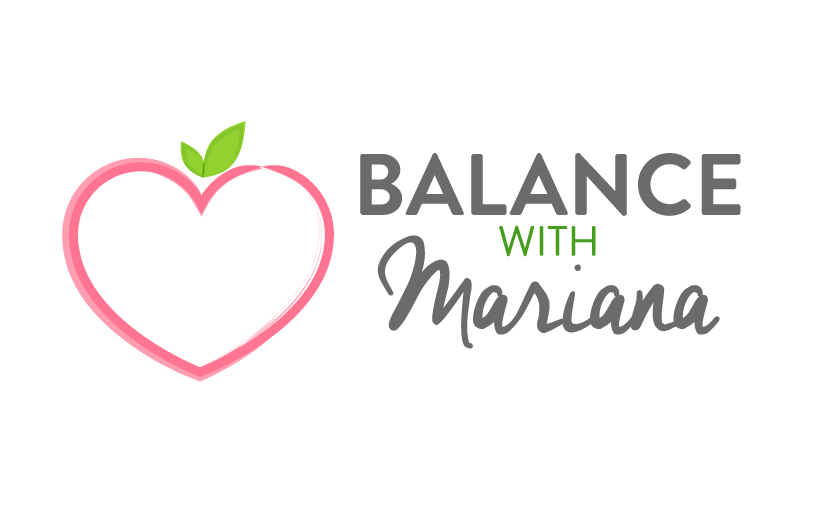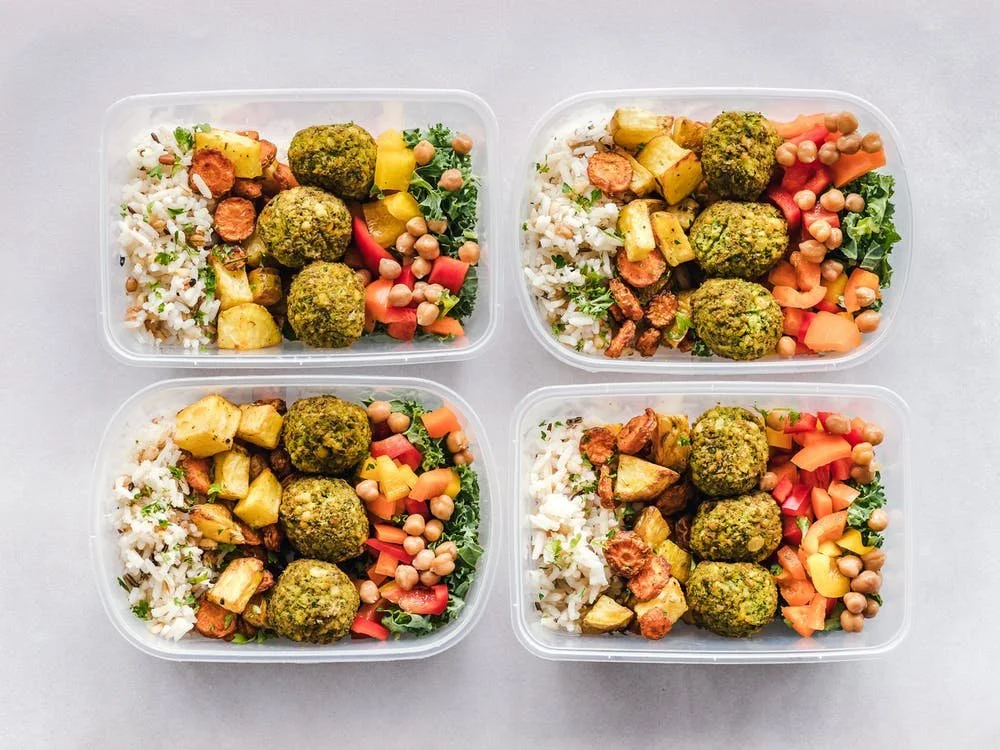Call me crazy (most of my family did) but I decided to try a CGM despite not really having blood sugar issues …anymore. Why? Because I do have a history of PCOS (polycystic ovarian syndrome) which is linked to blood sugar issues. The thing is, I’ve thankfully come a long way, as I’ve used my studies and experience in integrative nutrition to improve my diet/lifestyle, help balance my blood sugar and subsequently help balance my hormones.
It wasn’t a quick nor easy journey for me. I’d even say it’s an ongoing one. While I managed to improve my gut and hormones drastically (and even get pregnant; I now have a healthy baby in my arms), I know that I am still susceptible to gut and hormonal imbalances.
And so are millions of others.
So while I have now established a lifestyle that keeps me healthy (my CGM was good proof!), it’s important for me to be conscious of what foods are best for me and which ones to be careful with, to avoid constant spikes and avoid falling back into hormonal issues.
Plus, this experiment wasn’t just for me. Even though it’s important to know that EVERY PERSON IS DIFFERENT, research does show that there are lots of common behaviors (which I share today).
WHY IS THIS TOPIC SO IMPORTANT? Because blood sugar issues are now so common and a major cause of infertility, weight gain, pre-diabetes, and linked to so many other diseases.
Achieving blood-sugar balance is hugely important for weight loss and overall health.
Having healthy and steady blood sugar levels supports cardiovascular health, metabolic health (aka a more efficient metabolism!), hormonal health and overall wellbeing (not to mention weight loss).
So if you want to efficiently burn more calories, have a healthy reproductive system, stay slim and avoid getting “HANGRY”, then PAY ATTENTION
First I’ll share some personal discoveries from using my Levels CGM, then I’ll share some actionable tips for you to apply.
WHAT DID I LEARN WHILE WEARING MY LEVELS CGM?
Personally I was able to discover:
Lack of proper sleep (in my case, due to waking up for my baby) impacted my sensitivity to blood sugar (BS for short) the next day (not to mention my increased cravings)
Many “healthy” foods increased my BS a lot, these include oats, sweet potato and other starchy veggies like malanga, quequisque and yucca (despite not having huge amounts)
These foods that spike my BS (ex. oats and sweet potato) were better for me in small amounts in the evening (with/after dinner) and always combined with tons of healthy fats and some protein. so I can have them yes, but I need to be careful with portion sizes. And in my limited experience, the spread was less in the evening for some reason.
Oats I found to be better in the raw form as overnight oats (vs cooked oats) but I used only ¼ cup raw rolled organic oats combined with tons of seeds, nut butters and protein powder, and like this, my blood sugar spread was small. Also in the form of an energy balls it was fine (again, in its raw form). This I attribute to being a higher source of resistant starch.
Green juice and kombucha (which I love!) spike my BS, BUT if I have them after my meal (vs. before the meal or standalone), the impact was much lower. So I am not giving up my kombucha but I’ll try to have it with/after my meal. And I’ll be more conscious to use a bit less fruit in my green juice.
Overeating in general (which I tend to do often, this is a weak area for me) lead to larger BS spreads regardless of the goods. This is an educated guess based on some anomalies, which I drew the only commonality was overeating, so I’m guessing!
Walking after meals helps, as does the vinegar before meals (see below)
Artificial sugars are a no-no (ex. Diet coke or lemonade with Splenda)
*Note: this was based on limited data as I used the CGM for only a month. I am definitely considering doing another month in the near future to delve deeper into my self-knowledge / experiment a bit more.
HOW CAN YOU APPLY SOME OF THIS KNOWLEDGE TO HELP KEEP YOUR GLUCOSE STABLE?
Here are 8 great “hacks” to avoid large glucose spikes and support healthy blood sugar levels:
Note: following these tips will allow you to eat more freely, avoid dieting and get healthier (without counting calories nor portions).
1. START WITH FIBER. Adding fiber to every meal is CRUCIAL, and ideally you want to start each meal with fiber rich foods (such as vegetables!). When it comes to carbs with fiber, it’s important to focus on low-glycemic, high-fiber carbs. And of course, crowd out those simple carbs that send your blood sugar spiking.
Some great lower-glycemic, high fiber carbs include the following (listed next to the foods is their estimated glycemic load):
Berries 6-7
lentils, chickpeas and black beans 5-7
apples and pears 4-5
carrots and butternut squash 3-4
lowest carb veggies including broccoli, cauliflower, brussels sprouts, zucchini, asparagus, cabbage, lettuce, dark leafy greens 1-3
avocados, coconut, nuts and seeds 0-3
NOTE: I like to highlight foods with lower glycemic LOAD vs just their glycemic INDEX. Why? The load considers the total amount of rapidly absorbable carbohydrates, as well as the glycemic index. Ex. if you isolate the sugars in a carrot, as the glycemic index does, they are quite high. But if you consider the rate at which those sugars are absorbed, due to all the fiber in the carrot (as the glycemic load does), the absorption of the sugars is quite slow. This is what we want. Slow absorption of sugar for more sustained energy, weight management and overall health.
2. ADD HEALTHY FATS. AIm to have healthy fats at each meal, especially if you’re having some carbs, such as: wild-caught fish, organic meats, bone broth, and in my opinion, the best ones to add in regularly are those also have tons of fiber too (ex. nuts, seeds, avocado and coconut –they’re a double positive whammy as far as being blood sugar healthy foods)
3. ADD VINEGAR. Try having a tablespoon of apple cider vinegar right before a meal (especially any meal that has carbs / sugar / that might usually spike your blood sugar). You can add it to a little bit of water and take as a shot right before your meal, or just make sure to include it in your meal, example in the salad dressing. Studies show that the same meal can spike your blood sugar a lot less if you have some vinegar right before or with your meal.
4. WALK AFTER MEALS. Doing some movement after a meal, such as a 10-30 minute walk, or even just taking the stairs, or doing a mini 15 minute low impact workout can help! Studies again show a reduction in blood sugar spikes when we exercise before or after a meal, but particularly after.
5. STAY ACTIVE in general. Working out regularly, even just short workouts, will help keep your blood sugar stable overall. Not to mention tons of other benefits that come with regular exercise!
6. EAT CARBS LAST. Have your carbs towards the end of the meal (so avoid that bread appetizer, instead wait till after). Studies show that it helps to start your meal with fiber rich-low glycemic foods with healthy fats and/or protein, and leave the starchier / sugary foods for the end. Also, if you regularly eat “sweat treats” /dessert (like I do daily!), it’s better to have your dessert right after your meal, versus as a snack on its own 2 hours after.
7. HYDRATE. Hydrate in between meals, avoid too much water during the meal. This helps with overall digestion, but has also shown benefits for your blood sugar.
8. PRIORITIZE SLEEP. Sleeping well is extremely beneficial for better blood sugar management. Its carzy how impactful sleep can be. Even one night of poor sleep can throw off your blood sugar.
When a person is sleep deprived, their insulin response to blood sugar decreases. As a result, blood sugar isn’t cleared from circulation as quickly, and levels are higher than normal. After a poor night of sleep, your breakfast will create higher spikes in blood sugar. Also, less sleep = increased appetite. It can especially trigger cravings for foods rich in simple carbohydrates for a quick energy burst. These are quickly converted into blood sugar or glucose. If you’ve ever noticed yourself craving carbs or junk food after a long night, this is why.
Lastly, checkout my previous blog “11 tips for balancing blood sugar” for more essential tips to sustaining stable blood sugar levels.
I hope you start putting these tips into practice even if you don’t have a history of blood sugar issues because general blood sugar management is so important for everyone’s overall health, to avoid gaining weight and so much more. If you want to dig a bit deeper, reach out!




